Xinyi Jiang
Estimation of Covariance Matrix of Interference for Secure Spatial Modulation against a Malicious Full-duplex Attacker
Oct 21, 2021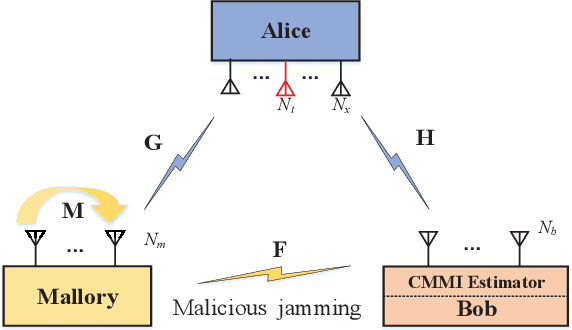
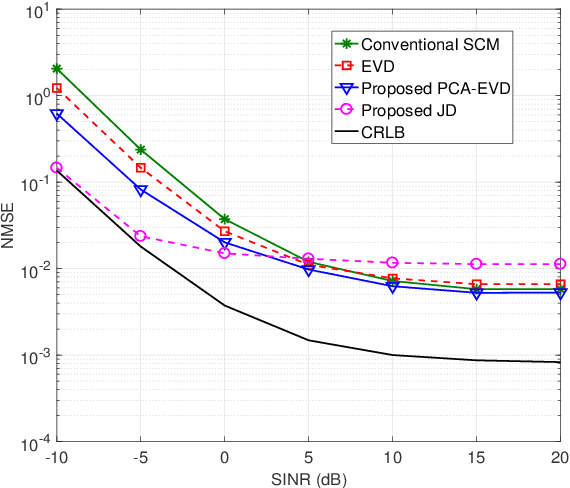
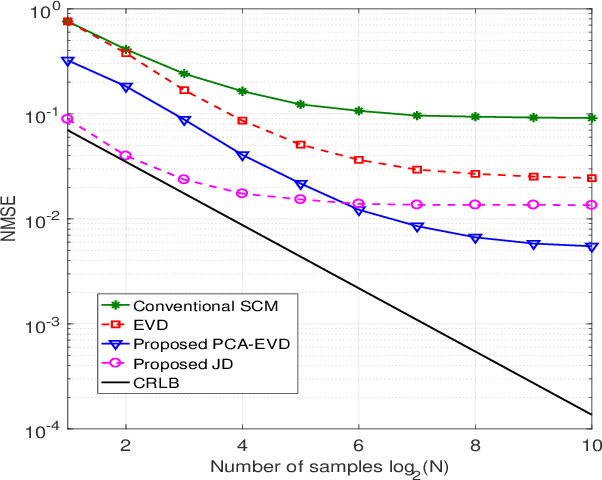
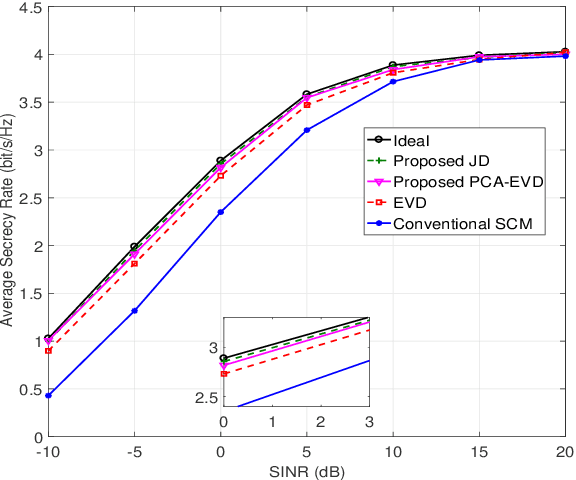
Abstract:In a secure spatial modulation with a malicious full-duplex attacker, how to obtain the interference space or channel state information (CSI) is very important for Bob to cancel or reduce the interference from Mallory. In this paper, different from existing work with a perfect CSI, the covariance matrix of malicious interference (CMMI) from Mallory is estimated and is used to construct the null-space of interference (NSI). Finally, the receive beamformer at Bob is designed to remove the malicious interference using the NSI. To improve the estimation accuracy, a rank detector relying on Akaike information criterion (AIC) is derived. To achieve a high-precision CMMI estimation, two methods are proposed as follows: principal component analysis-eigenvalue decomposition (PCA-EVD), and joint diagonalization (JD). The proposed PCA-EVD is a rank deduction method whereas the JD method is a joint optimization method with improved performance in low signal to interference plus noise ratio (SINR) region at the expense of increased complexities. Simulation results show that the proposed PCA-EVD performs much better than the existing method like sample estimated covariance matrix (SCM) and EVD in terms of normalized mean square error (NMSE) and secrecy rate (SR). Additionally, the proposed JD method has an excellent NMSE performance better than PCA-EVD in the low SINR region (SINR < 0dB) while in the high SINR region PCA-EVD performs better than JD.
Beamforming and Transmit Power Design for Intelligent Reconfigurable Surface-aided Secure Spatial Modulation
Jun 07, 2021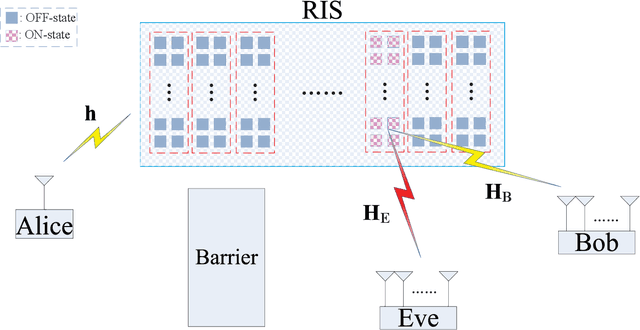
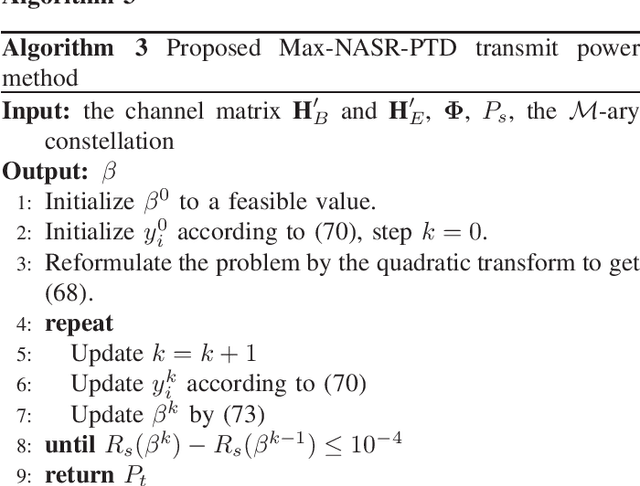
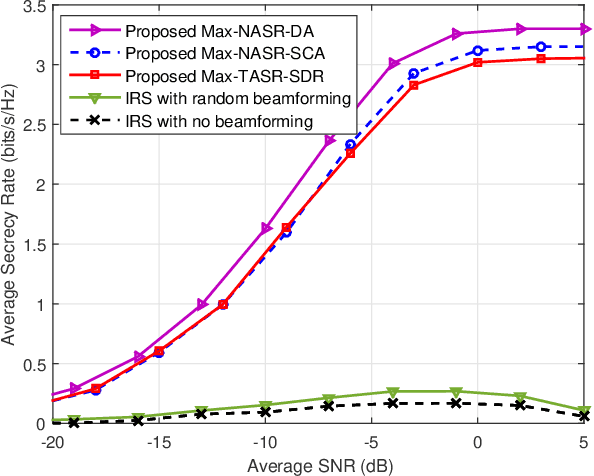
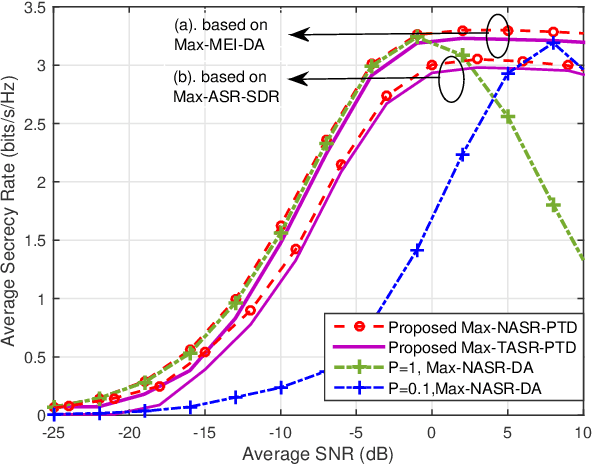
Abstract:Intelligent reflecting surface (IRS) is a promising solution to build a programmable wireless environment for future communication systems, in which the reflector elements steer the incident signal in fully customizable ways by passive beamforming. In this paper, an IRS-aided secure spatial modulation (SM) is proposed, where the IRS perform passive beamforming and information transfer simultaneously by adjusting the on-off states of the reflecting elements. We formulate an optimization problem to maximize the average secrecy rate (SR) by jointly optimizing the passive beamforming at IRS and the transmit power at transmitter under the consideration that the direct pathes channels from transmitter to receivers are obstructed by obstacles. As the expression of SR is complex, we derive a newly fitting expression (NASR) for the expression of traditional approximate SR (TASR), which has simpler closed-form and more convenient for subsequent optimization. Based on the above two fitting expressions, three beamforming methods, called maximizing NASR via successive convex approximation (Max-NASR-SCA), maximizing NASR via dual ascent (Max-NASR-DA) and maximizing TASR via semi-definite relaxation (Max-TASR-SDR) are proposed to improve the SR performance. Additionally, two transmit power design (TPD) methods are proposed based on the above two approximate SR expressions, called Max-NASR-TPD and Max-TASR-TPD. Simulation results show that the proposed Max-NASR-DA and Max-NASR-SCA IRS beamformers harvest substantial SR performance gains over Max-TASR-SDR. For TPD, the proposed Max-NASR-TPD performs better than Max-TASR-TPD. Particularly, the Max-NASR-TPD has a closed-form solution.
Fast Ambiguous DOA Elimination Method of DOA Measurement for Hybrid Massive MIMO Receiver
May 14, 2021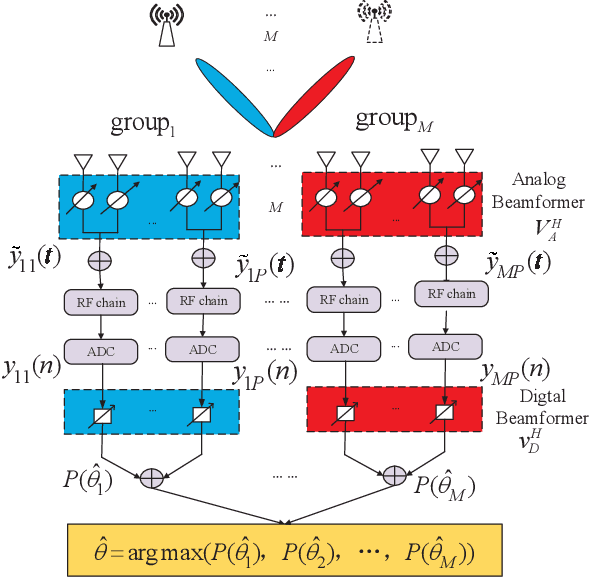

Abstract:DOA estimation for massive multiple-input multiple-output (MIMO) system can provide ultra-high-resolution angle estimation. However, due to the high computational complexity and cost of all digital MIMO systems, a hybrid analog digital (HAD) structure MIMO was proposed. In this paper, a fast ambiguous phase elimination method is proposed to solve the problem of direction-finding ambiguity caused by the HAD MIMO. Only two-data-blocks are used to realize DOA estimation. Simulation results show that the proposed method can greatly reduce the estimation delay with a slight performance loss.
Virufy: A Multi-Branch Deep Learning Network for Automated Detection of COVID-19
Mar 16, 2021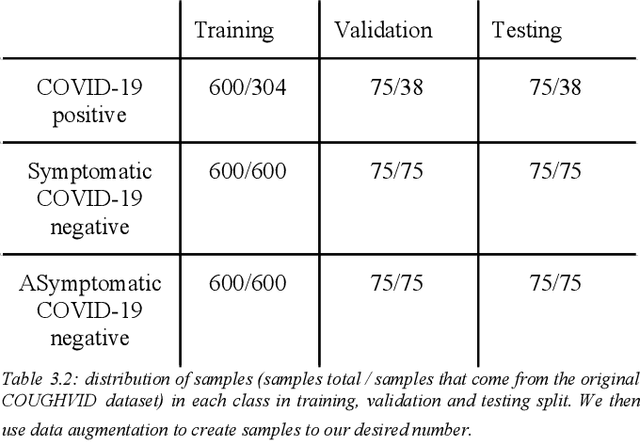
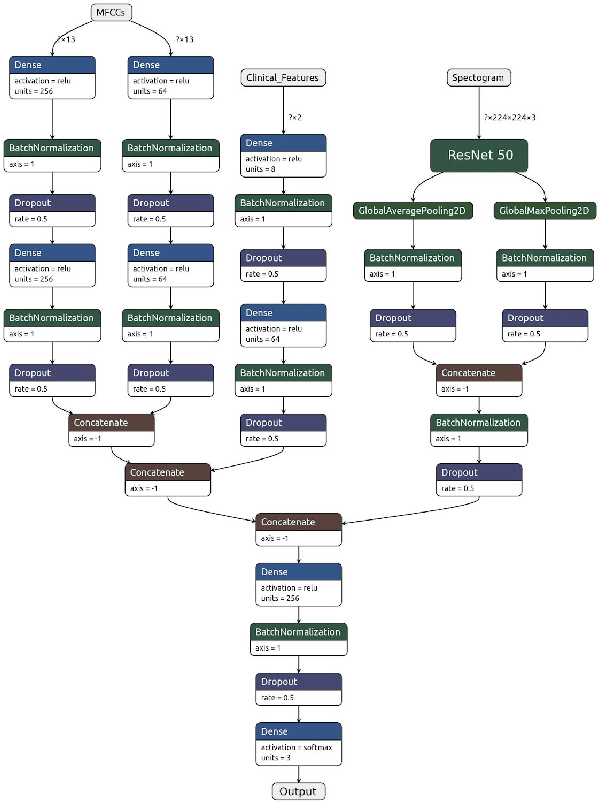
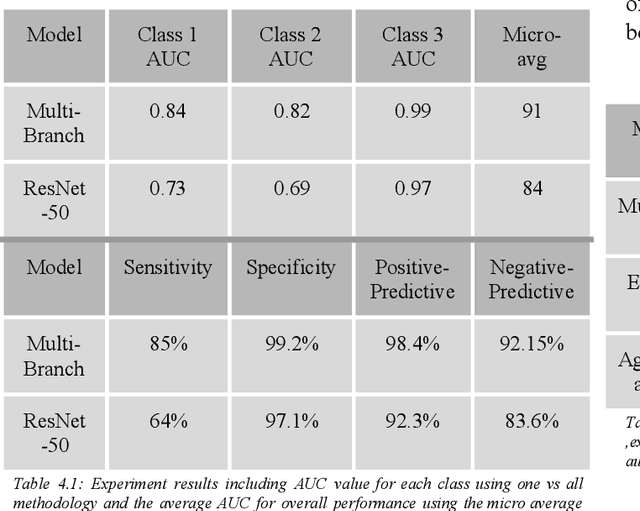
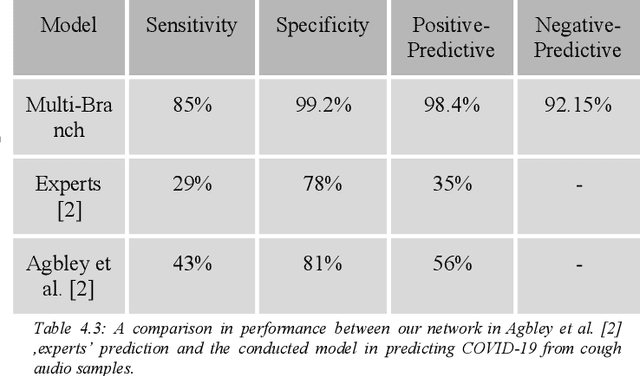
Abstract:Fast and affordable solutions for COVID-19 testing are necessary to contain the spread of the global pandemic and help relieve the burden on medical facilities. Currently, limited testing locations and expensive equipment pose difficulties for individuals trying to be tested, especially in low-resource settings. Researchers have successfully presented models for detecting COVID-19 infection status using audio samples recorded in clinical settings [5, 15], suggesting that audio-based Artificial Intelligence models can be used to identify COVID-19. Such models have the potential to be deployed on smartphones for fast, widespread, and low-resource testing. However, while previous studies have trained models on cleaned audio samples collected mainly from clinical settings, audio samples collected from average smartphones may yield suboptimal quality data that is different from the clean data that models were trained on. This discrepancy may add a bias that affects COVID-19 status predictions. To tackle this issue, we propose a multi-branch deep learning network that is trained and tested on crowdsourced data where most of the data has not been manually processed and cleaned. Furthermore, the model achieves state-of-art results for the COUGHVID dataset [16]. After breaking down results for each category, we have shown an AUC of 0.99 for audio samples with COVID-19 positive labels.
Spatial Modulation: an Attractive Secure Solution to Future Wireless Network
Mar 06, 2021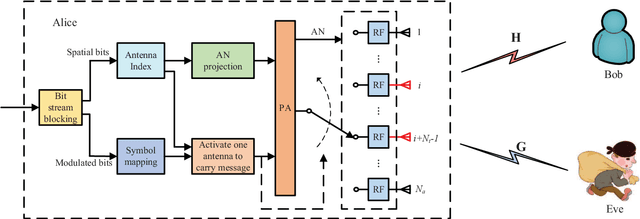
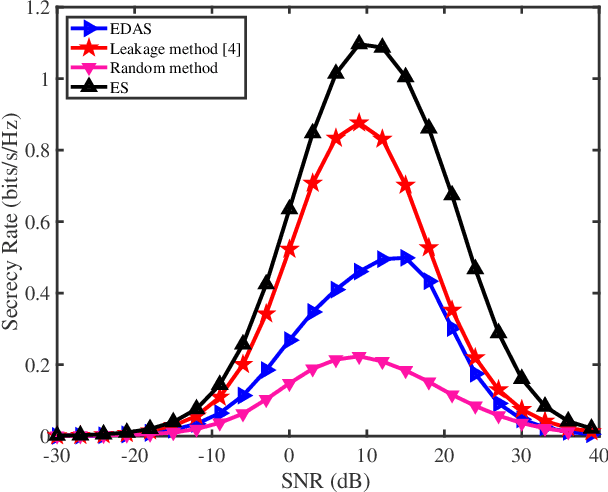
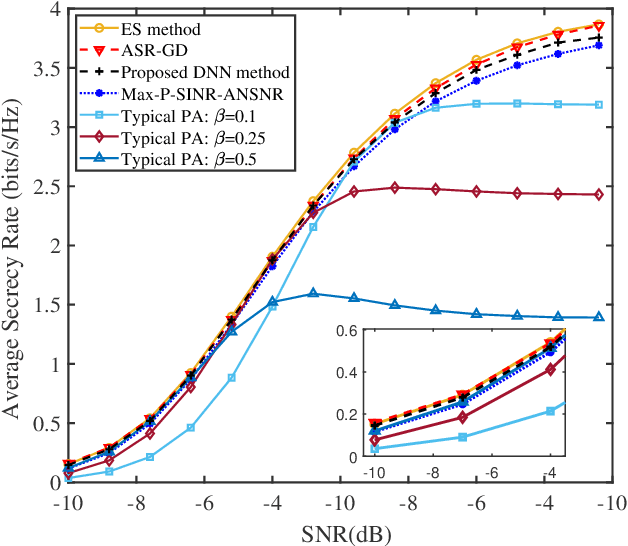
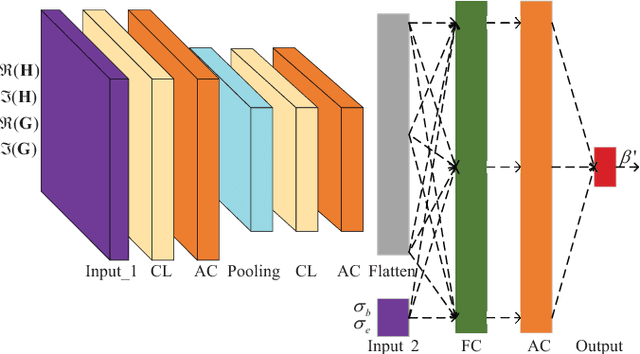
Abstract:As a green and secure wireless transmission method, secure spatial modulation (SM) is becoming a hot research area. Its basic idea is to exploit both the index of activated transmit antenna and amplitude phase modulation signal to carry messages, improve security, and save energy. In this paper, we review its crucial challenges: transmit antenna selection (TAS), artificial noise (AN) projection, power allocation (PA) and joint detection at the desired receiver. As the size of signal constellation tends to medium-scale or large-scale, the complexity of traditional maximum likelihood detector becomes prohibitive. To reduce this complexity, a low-complexity maximum likelihood (ML) detector is proposed. To further enhance the secrecy rate (SR) performance, a deep-neural-network (DNN) PA strategy is proposed. Simulation results show that the proposed low-complexity ML detector, with a lower-complexity, has the same bit error rate performance as the joint ML method while the proposed DNN method strikes a good balance between complexity and SR performance.
Virufy: Global Applicability of Crowdsourced and Clinical Datasets for AI Detection of COVID-19 from Cough
Dec 25, 2020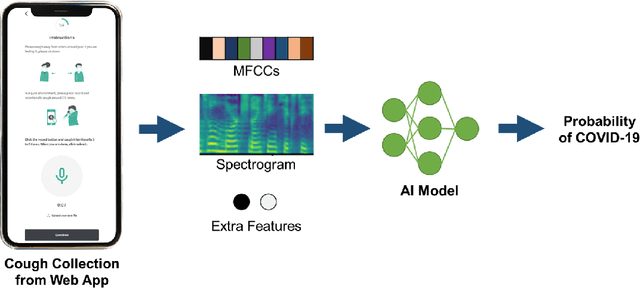
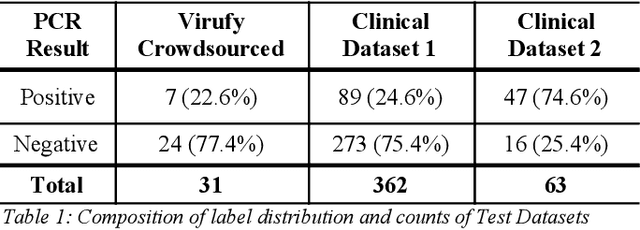
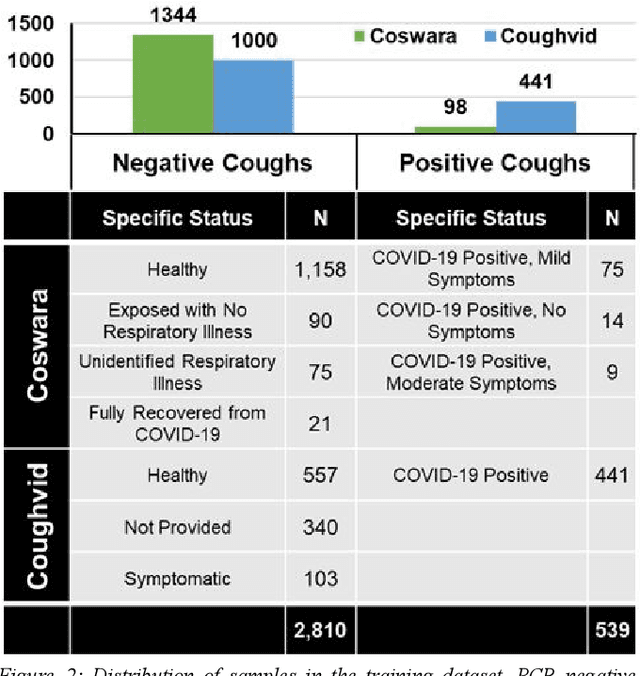
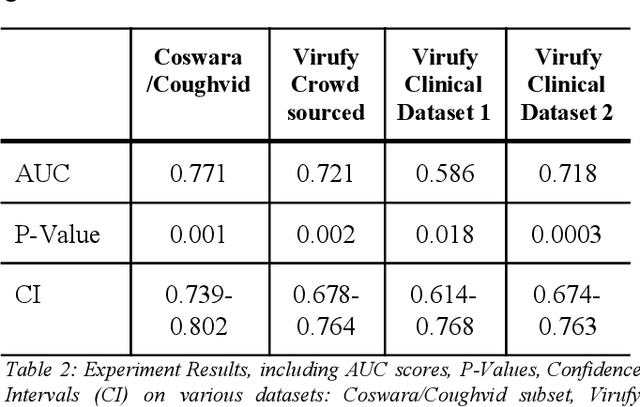
Abstract:Rapid and affordable methods of testing for COVID-19 infections are essential to reduce infection rates and prevent medical facilities from becoming overwhelmed. Current approaches of detecting COVID-19 require in-person testing with expensive kits that are not always easily accessible. This study demonstrates that crowdsourced cough audio samples recorded and acquired on smartphones from around the world can be used to develop an AI-based method that accurately predicts COVID-19 infection with an ROC-AUC of 77.1% (75.2%-78.3%). Furthermore, we show that our method is able to generalize to crowdsourced audio samples from Latin America and clinical samples from South Asia, without further training using the specific samples from those regions. As more crowdsourced data is collected, further development can be implemented using various respiratory audio samples to create a cough analysis-based machine learning (ML) solution for COVID-19 detection that can likely generalize globally to all demographic groups in both clinical and non-clinical settings.
Incremental Sense Weight Training for the Interpretation of Contextualized Word Embeddings
Dec 18, 2019



Abstract:We present a novel online algorithm that learns the essence of each dimension in word embeddings by minimizing the within-group distance of contextualized embedding groups. Three state-of-the-art neural-based language models are used, Flair, ELMo, and BERT, to generate contextualized word embeddings such that different embeddings are generated for the same word type, which are grouped by their senses manually annotated in the SemCor dataset. We hypothesize that not all dimensions are equally important for downstream tasks so that our algorithm can detect unessential dimensions and discard them without hurting the performance. To verify this hypothesis, we first mask dimensions determined unessential by our algorithm, apply the masked word embeddings to a word sense disambiguation task (WSD), and compare its performance against the one achieved by the original embeddings. Several KNN approaches are experimented to establish strong baselines for WSD. Our results show that the masked word embeddings do not hurt the performance and can improve it by 3%. Our work can be used to conduct future research on the interpretability of contextualized embeddings.
 Add to Chrome
Add to Chrome Add to Firefox
Add to Firefox Add to Edge
Add to Edge